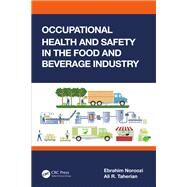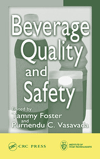Enhance driver safety after ‘falling back’
Safety advice to adapt to daylight saving time

For most of the United States, daylight saving time will end at 2 a.m. local time on Sunday, Nov. 6, which is when clocks are turned back an hour, making it 1 a.m. Arizona and Hawaii are the only two states that don’t observe daylight saving time.
For the record, it is daylight saving time and not daylight savings time.
When it goes into effect each spring, clocks are moved forward one hour at 2 a.m. standard time, so the time becomes 3 a.m. An easy way to remember this is “spring forward, fall back.”
Negative Impacts
The end of daylight saving time adds another hour of “night” driving, and night driving is more challenging and dangerous. The National Safety Council says traffic death rates are three times greater at night than during the day.
For one thing, a longer period of darkness means decreased visibility — for both drivers and pedestrians.
Studies indicate that pedestrians walking around at dusk are nearly three times more likely to be struck and killed by vehicles in the days following the end of daylight saving time than just before the time change.
Other research shows that 90 percent of a driver’s reaction depends on vision, and vision is severely limited at night. We see far less at night than we do during the day. Our resolution, depth perception, color recognition and peripheral vision are compromised after sundown. What’s more, a person’s ability to see well at night generally declines with age.
Driver Fatigue
Driving in the dark also increases the chance of driver fatigue. Because the body typically thinks of night as the time to rest, a person can become increasingly drowsy. Drowsiness dulls concentration and slows reaction time, increasing the risk of having an accident. Driving drowsy, a condition most drivers fail to recognize, can be just as dangerous as driving drunk.
The end of daylight saving time throws off our internal clocks. Studies find that it can take as long as two weeks for people to fully readjust their sleep schedule after the time change.
People do not always recognize when they are sleepy, says the AAA Foundation for Traffic Safety. A person might feel awake, but if they are tired, they could fall asleep at any time.
Drivers should be aware of the symptoms of drowsiness, the foundation says. If a person has any of them, it advises pulling off the road as soon as possible and finding a place to get some rest.
Signs of drowsiness include the following:
• Difficulty keeping your eyes open and focused
• Trouble keeping your head up
• Daydreaming or having wandering, disconnected thoughts
• Difficulty focusing, yawning, rubbing your eyes repeatedly, or frequent blinking
• Drifting out of your lane, tailgating or running over rumble strips
• Missing signs or driving past your exit
• Not remembering driving the last few miles
Safety Tips
An increase in accidents for the first week after “falling back” is a possibility, safety officials say. Consequently, it is good practice, along with reminding drivers about the dangers of drowsy driving, to caution them to be especially careful as they adjust to the end of daylight saving time.
Safety officials offer these tips to improve driver safety during night driving:
• Keep the windshield and all windows clean — inside and out.
• Keep mirrors clean.
• Make certain that all exterior vehicle lights work properly, and keep them clean so that you can see and be seen more easily.
• Make sure that headlights are properly aimed. Misaligned headlights can reduce a driver’s visibility and blind other drivers.
• Increase following distance and regulate speed.
• Don’t blind other drivers by using high beams.
• If blinded by an oncoming vehicle’s high beams, avoid the glare by watching the right edge of the road and using it as a steering guide.
• Eat light meals; heavy meals tend to cause sleepiness.
Safety officials recommend observing these night driving safety tips as soon as the sun goes down. They point out that twilight is one of the most difficult times to drive because a driver’s eyes are constantly changing to adapt to the growing darkness. BI
Looking for a reprint of this article?
From high-res PDFs to custom plaques, order your copy today!





